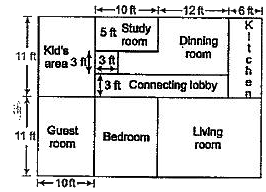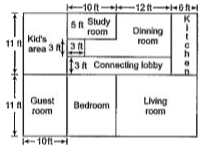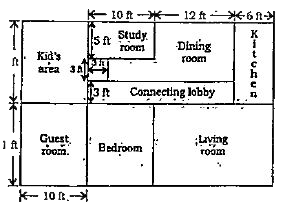In class VI, teacher gave a topic for debate as Formative Assessment (FA) task.
"Hindu-Arabic numerals are more powerful than Roman Numerals."
Objective of this FA activity is to assess:
Knowledge
Analysis
Creativity
Understanding
The correct Answer is:B
Topper's Solved these Questions
Similar Questions
The traditional religious culture of the classical world, both Greek and Roman, had been polytheist. That is, it involved a multiplicity of cults that included both Roman Italian gods like Jupiter, Juno, Minerva and Mars, as well as numerous Greek and eastern deities worshipped in thousands of temples, shrines and sanctuaries throughout the empire. Polytheists had no common name or label to describe themselves. The other great religious tradition in the empire was Judaism. But Judaism was not a monolith either, and there was a great deal of diversity within the Jewish communities of late antiquity. Thus, the Christianization of the empire in the fourth and fifth centuries was a gradual and complex process. Polytheism did not disappear overnight, especially in the western provinces, where the Christian bishops waged a running battle against beliefs and practices they condemned more than the Christian laity did. The boundaries between religious communities were much more fluid in the fourth century than they would become thanks to the repeated efforts of religious leaders, the powerful bishops who now led the Church, to rein in their followers and enforce a more rigid set of beliefs and practices.
Enlist the names of Roman gods who were worshipped in temples and shrines throughout the empire.
View SolutionThe traditional religious culture of the classical world, both Greek and Roman, had been polytheist. That is, it involved a multiplicity of cults that included both Roman Italian gods like Jupiter, Juno, Minerva and Mars, as well as numerous Greek and eastern deities worshipped in thousands of temples, shrines and sanctuaries throughout the empire. Polytheists had no common name or label to describe themselves. The other great religious tradition in the empire was Judaism. But Judaism was not a monolith either, and there was a great deal of diversity within the Jewish communities of late antiquity. Thus, the Christianization of the empire in the fourth and fifth centuries was a gradual and complex process. Polytheism did not disappear overnight, especially in the western provinces, where the Christian bishops waged a running battle against beliefs and practices they condemned more than the Christian laity did. The boundaries between religious communities were much more fluid in the fourth century than they would become thanks to the repeated efforts of religious leaders, the powerful bishops who now led the Church, to rein in their followers and enforce a more rigid set of beliefs and practices.
What do you mean by Judaism?
View Solution
Knowledge Check
In Class VI, a teacher gave a topic for debate as Formative Assessment (FA) task "Hindu-Arabic numerals are more powerful than roman Numerals." The objective of this FA activity is to assess
AunderstandingBknowledgeCanalysisDcreativityClass VI students were given the following layout of a house

The students were asked to find out the
A. perimeter and area of each room.
B. total perimeter and total area of the house.
The above activity can be used by teacher as formative assessment task becauseAthe students will find the task interesting and will not disturb each otherBit will remove the phobia of Maths examinationCit will be easy for teacher to engage all the students for 40 min periodDthe students' responses will help teacher to diagnose their understanding regarding finding dimensions, calculations, knowledge of formulae for perimeter and area etc.Class VI students were given the following layout of a house.

The students were asked to find out the
A. perimeter and area of each room.
B. total perimeter and total area of the house.
The above activity can be used by teacher as formative assessment task becauseAthe students will find the task interesting and will not disturb each otherBit will remove the phobia of Maths examinationCit will be easy for teacher to engage all the students for 40 min periodDthe students' responses will help teacher to diagnose their understanding regarding finding dimensions, calculations knowledge of formulae for perimeter and area etc.
The traditional religious culture of the classical world, both Greek and Roman, had been polytheist. That is, it involved a multiplicity of cults that included both Roman Italian gods like Jupiter, Juno, Minerva and Mars, as well as numerous Greek and eastern deities worshipped in thousands of temples, shrines and sanctuaries throughout the empire. Polytheists had no common name or label to describe themselves. The other great religious tradition in the empire was Judaism. But Judaism was not a monolith either, and there was a great deal of diversity within the Jewish communities of late antiquity. Thus, the Christianization of the empire in the fourth and fifth centuries was a gradual and complex process. Polytheism did not disappear overnight, especially in the western provinces, where the Christian bishops waged a running battle against beliefs and practices they condemned more than the Christian laity did. The boundaries between religious communities were much more fluid in the fourth century than they would become thanks to the repeated efforts of religious leaders, the powerful bishops who now led the Church, to rein in their followers and enforce a more rigid set of beliefs and practices.
What did the Christian bishops do?
View SolutionNeha uses the following assessment techniques in the subject of EVS for Class V
I. Hands-on activities assessment
II. Home assignment assessment
III. Project work assessment
IV. Oral testing
Which one of the following pairs of techniques is likely to be more objective assessment?
View SolutionNeha uses the following assessment techniques in the subject of EVS for class V.
A. Hands-on activities assessment
B. Home assignment assessment
C. Project work assessment
D. Oral testing
Which one of the following pairs of techniques is likely to be more objective assessment?
View SolutionClass ' VIh students' were given -the following layout of a house :

The students were asked to find out the
(1) Perimeter and area of each room.
(2) Total perimeter and total area of the house.
The above activity can be used by teacher as forinative assessment task because
View SolutionFrustration is global cancer. It has spared no country. In some countries, frustration exists because these countries are populated by "have-notes". In other countries, which are populated by 'haves', frustration is among them also because they do have. As far as India is concerned its education system is breeding more and more frustration among both students and teachers. And yet, no one sees what can be done to make it more meaningful. Many reforms have been discussed at length but have come to nothing for one reason or another. The authorities are peddling the idea of autonomous colleges as a means of toning to teaching standards. They argue that by allowing certain colleges to introduce their own courses, hold seminar, and above all, evolve their own method of assessing students, students will get a far better deal, Indeed, they make out they such colleges will have free hand in nearly everything except granting degrees. In theory, all this sounds attractive enough. But there is little to show that the managements concerned are keen on such reforms. Even today, nothing prevents a college from inviting quest speakers on the specialist subjects or holding courses in English for vernacular students. But not a single one of these who are now clamoring for autonomy has bothered to do so. It is no secret that colleges which may be freed to an extend from university control are highly elitist. In Mumbai, for example, for example there is a big cultural gulf between city colleges and suburban colleges. If some of the former are now given a degree of autonomy, it will only heighten this disparity.
The answer to the vexing problem of declining standards in higher education does not lie in encouraging the growth to model institutions but in improving overall standards. This is of course easier said than done. Since more and more young people are seeking degrees, the only solution, however unpalatable it may sound, is drastically to reduce the number of those who are admitted to colleges. Even though there is political pressure on many state governments to build new colleges and to reserve more seats for backward classes, it will be sheer folly to expand such facilities recklessly without giving any thought to the quality of education imparted. If admissions are made very selective, it will automatically reduce the number of entrants. This should apply particularly to new colleges, many of which are little more than degree factories. Only then can the authorities hope to lering down the teacher student ratio to manageable proportions what is more, teachr!' should be given refresher courses every summer eauun to brush up their knowledge. Besides, if college managements increase the library budget it will help both staff and students a great deal. At the same time, however, it will be unfair to deny college employers students a great deal. At the same time, however, it will be unfair to deny college deny college education to thousands of young men and women unless employers stop insisting join degress even for clerical jobs. For a start, why can't the Government disqualify graduates from securing certain jobs say class III and IV posts? Once the degrees are declined from jobs, at least in some important departments, it will make many young people think two before joining college.
The author's attitude is
View Solution
